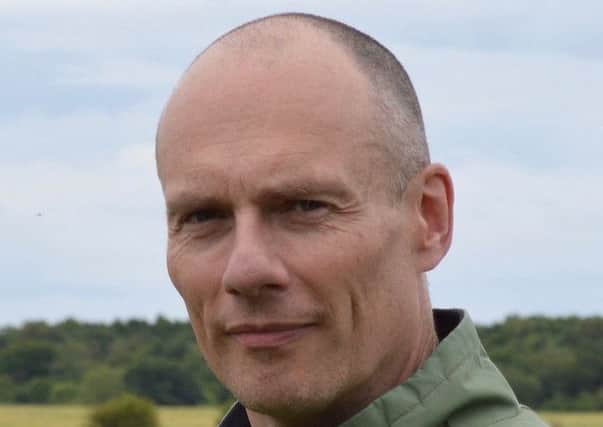Dr Dave Parish: Pear trees may not feature in our land management '“ but partridges still benefit


At this time in 2010, and again in 2016, snow hit the east of the country with a vengeance, so by the time this appears in print we may already be in winter’s clutches.
The Game & Wildlife Conservation Trust (GWCT) is working across many aspects of our environment applying science and research to develop ways to assure the future for our native birds and wildlife.
Advertisement
Hide AdAdvertisement
Hide AdAt the top of our list is the grey partridge – in fact it is our emblem – a wonderful indicator for the health and biodiversity of farmland, and the focus of the aptly named PARTRIDGE project, supported by the North Sea Region Interreg fund. The big picture for grey partridge however is one of steep decline – a 92 per cent drop from 1967 to 2016 although we have no separate data for Scotland.
We do know however, from the considerable amount of science we and others have conducted, that this decline is driven mostly by the loss of invertebrates for chicks to feed on shortly after hatching, as well as loss of nesting habitat and increased predation of hen birds and nests.
We also know that where land managers intervene with positive measures then this decline can be abated. Where the greys are doing well then other species – plants, invertebrates, birds and mammals – will all benefit.
The Scottish Government’s State of Nature 2016 Scotland report painted a worrying picture for Scotland’s birds with 44 per cent of species declining over the longer term, with 14 new species recently added to the red list of ‘conservation concern’.
So, what can farmers and land managers do to halt this spiral? Much is already known about grey partridge requirements and the PARTRIDGE project aims to show what can be done via ten demonstration sites across northern Europe.
We know that grey partridges need tall, reasonably dry vegetation during the breeding season in which to conceal their nests. They need protection from predators such as foxes and stoats, and they need access to habitat that is insect rich for the chicks to feed on.
Through autumn and winter they also need tall cover, but more as ‘umbrella cover’ that they can move through freely and unimpeded, out of the gaze of predators above. This is particularly important in late winter when the stubbles have gone under the plough, most wild vegetation has died back and winter cropping is still short in the fields. This is the time when cock and hen birds start to pair up and move about and, when in the open particularly, are more at risk.
This type of cover can be created by land managers relatively easily, with a variety of seed mixes, providing protection from predators and seed food for some, but not all, of the winter. No crop can be guaranteed to provide seed right through to late winter and what there is will be foraged by slugs, snails, insects, mice, deer, rabbits and other birds too – and much drops off the plants to rot.
Advertisement
Hide AdAdvertisement
Hide AdBecause of this, supplementary feeding is important, especially late in winter, siting feed hoppers close to cover so that the birds can find shelter easily should they sense a threat.
Ideally more farms working together over larger catchments, all of them providing sympathetic habitat not just for grey partridge but for many other farmland species, would move matters forward.
Managing hedges properly is also important as this key habitat feature can provide year-round cover and resources, as is leaving field margins and headlands to provide food, shelter and nesting cover. There is a delicate balance to be struck between farming for nature and farming for food, and both should have their place on the modern farm.
GWCT has two PARTRIDGE demonstration sites in Scotland. On these sites we are increasing the area of habitat crucial to grey partridge and other target wild species to 7 per cent of the farmed area as that is the percentage that we estimate is needed to support healthy populations.
We are also trialling new crops and seed mixes and have deployed a new variety that gives all the essential elements described above. The mix contains several species of annuals, biennials and perennials sown in large blocks of around 1ha or in 24m wide margins. Through a programme of cutting and resowing this can provide a habitat ideal for chicks in summer with short, open vegetation rich in insect life, adjacent to taller canopy cover for nesting in spring and protection in winter.
Where we have done this grey partridge numbers are increasing significantly. If more farms and estates would deploy such measures, ideally working together with their neighbours, then we can put the grey partridge back on a far sounder footing.
With the clutches of winter approaching, or already here, the hard work of many land managers continues to provide a lifeline for our ‘clutches’ – or more correctly coveys – of grey partridge, although contrary to popular song, pear trees do not feature in our support measures. Not yet anyway.
Dr Dave Parish, head of lowland research, Scotland, Game & Wildlife Conservation Trust.